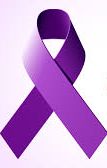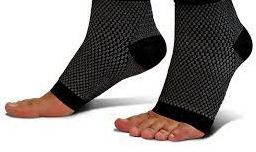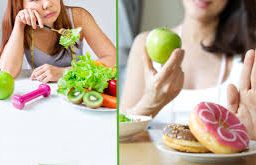
Epilepsy Myths vs. Facts: Understanding the Truth About Seizures
Epilepsy, a neurological disorder characterized by recurrent seizures, affects millions globally. Despite its prevalence, misconceptions abound. Let’s delve into the facts to understand the disease better.

Myth 1: Epilepsy is a Mental Illness
Fact: Epilepsy is a neurological disorder, not a mental illness. It is characterized by recurrent seizures, which are caused by abnormal electrical activity in the brain. While epilepsy may coexist with mental health conditions, they are distinct disorders. It does not determine a person’s intelligence or cognitive abilities. While some individuals with the condition may have learning or cognitive challenges, many have average or above-average intelligence.
Myth 2: All Seizures Look the Same
Fact: There are various types of seizures, and they can present differently. Some seizures involve convulsions and loss of consciousness (tonic-clonic seizures), while others may cause brief periods of staring (absence seizures). It’s essential to recognize that not all seizures are dramatic or easily noticeable.
Myth 3: You Should Put Something in the Mouth of Someone Having a Seizure
Fact: Never put anything in the mouth of someone having a seizure. This can be dangerous and may cause injury. Instead, gently guide the person to a safe place, lay them on their side to prevent choking, and cushion their head.
Myth 4: People with Epilepsy Cannot Lead Normal Lives
Fact: Many individuals with this condition can lead fulfilling and productive lives. With proper treatment and management, seizures can often be controlled, allowing epileptic persons to work, drive, and engage in everyday activities.
Myth 5: You Can Swallow Your Tongue During a Seizure
Fact: It is physically impossible to swallow your tongue. The tongue may move around during a seizure, but there is no risk of swallowing it. Trying to hold someone’s tongue during a seizure can lead to injury.
Myth 6: Epilepsy is Always Genetic
Fact: While some forms of the condition have a genetic component, many cases have no known cause. It can result from head injuries, infections, brain tumors, or other factors unrelated to genetics.
Myth 7: People with Epilepsy Should Avoid Exercise
Fact: Regular exercise can benefit epileptic persons. It can help reduce stress, improve mood, and promote overall well-being. However, individuals with this condition should consult their healthcare provider before starting a new exercise program.
Myth 8: Epilepsy is a death sentence
Fact: It is a chronic condition, but it is not typically life-threatening. With the right medical care and management, most epileptic individuals can lead long, healthy lives.
Myth 9: Epilepsy is Always a Lifelong Condition
Fact: While it can be a lifelong condition for some, others may outgrow it. The outlook depends on the underlying cause and the effectiveness of treatment.
Myth 10: All Seizures Are Convulsive
– Fact: While convulsive seizures with visible jerking or shaking are common, not all seizures look the same. Some seizures may involve staring spells, altered consciousness, or subtle movements. It’s essential to recognize the various seizure types to provide appropriate help.
Myth 11: Epilepsy Can Be Cured with Home Remedies
– Fact: It is a complex medical condition that typically requires professional medical treatment. While some people may find symptom relief through medication or lifestyle modifications, there is no guaranteed cure for epilepsy. It’s crucial to consult with a healthcare provider for proper diagnosis and management.
Myth 12: People with Epilepsy Should Avoid Exercise
– Fact: Exercise is generally safe and beneficial for epileptic individuals. It can help reduce stress and improve overall health. However, individuals with this condition should discuss their exercise plans with their healthcare provider to ensure safety and make any necessary adjustments.
Myth 13: Seizures Are Always Predictable
– Fact: Seizures can be unpredictable, and their triggers may vary from person to person. While some individuals may have specific triggers, such as sleep deprivation or flashing lights, others may not. It’s essential for individuals with epilepsy to work with their healthcare team to identify and manage their unique triggers.
Myth 14: Only children can develop epilepsy
Fact: It can develop at any age, from infancy to old age. While it’s true that some types of this condition are more common in childhood, adults can also be diagnosed with epilepsy.
Myth 15: Epilepsy is contagious
Fact: It is not contagious. It’s a neurological condition that results from various factors like genetics, brain injury, or infections. You cannot “catch” this condition from someone who has it.
Myth 16: Epileptic seizures are always triggered by flashing lights
Fact: While flashing lights, known as photosensitive epilepsy, can trigger seizures in some people, the majority of individuals with this condition are not sensitive to such stimuli. Triggers vary from person to person.
By dispelling these 16 myths and increasing awareness, we can create a more inclusive and supportive environment for individuals living with epilepsy. Education and understanding are key in breaking down the stigma associated with this condition and promoting empathy and acceptance. If you or someone you know has epilepsy, seek guidance from a healthcare professional for proper diagnosis and management.
Disclaimer: The information provided in this content is for general informational purposes only. It is not intended as medical or healthcare advice, diagnosis, or treatment. Always seek the advice of a qualified healthcare professional with any questions you may have regarding a medical condition or healthcare decisions.
















